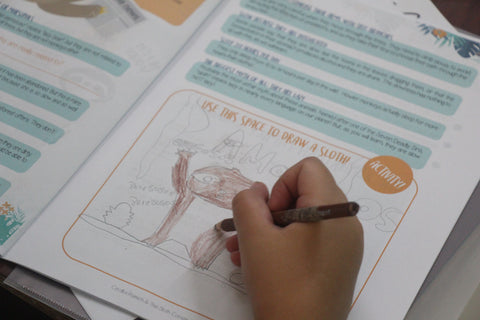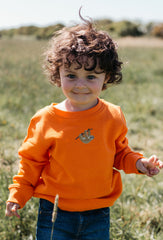the sloth conservation foundation takeover!
This week, The Sloth Conservation Foundation have taken over our blog, to let you know abit more about Sloths and all the wonderful work they do...
AN UNLIKELY CELEBRITY
"For an animal that is an expert at maintaining a low-profile, it is remarkable how popular sloths have become. However, given the pace of modern society, it seems fitting that sloths have become an internet sensation. They are idolised for their charming smile and laid-back lifestyle in the context of a world that often moves at a dizzying pace.
But despite their impressive popularity, they are still poorly understood. To this day, we still do not know how long they live in the wild (the oldest sloth in captivity lived until he was almost 51 years old!). We are still unsure how long a three-fingered sloth pregnancy lasts, and we are still perplexed how they are able to hang from the trees so long without their muscles getting tired.
Unfortunately, we may never come to fully understand these weird and wonderful creatures. Sloths are struggling to survive as their once idyllic rainforest homes are experiencing unprecedented rates of urbanisation throughout Central and South America."
LIVIN' LA VIDA 'SLOWCA'
"In Costa Rica, sloths are considered to be the epitome of the easy going ‘pura vida’ lifestyle - Even the very name ‘sloth’ in most languages translates as a version of lazy. One might wonder how such an animal survives in the wild at all. However, being slow is an incredibly successful strategy for survival. In fact, being slow has helped sloths to survive on this planet for almost 64 million years.
Due to a plethora of energy-saving adaptations, sloths physically don’t have the ability to move very fast, boasting the slowest metabolism of any land mammal. They can’t run away from predators (like a monkey would) and instead, have to rely on camouflage. Their specially structured fur helps them to blend in with their surroundings by providing a unique habitat for algae, fungi, and moths, some of which are not found anywhere else in the world!
Sloths are arboreal creatures, living the majority of their lives high in the rainforest canopy. They are perfectly built for life in the tops of the trees, and in an ideal world would only come down to the ground once a week to go to the toilet. The tree canopy acts as a highway for a variety of arboreal animals but is being quickly destroyed to make room for roads and buildings and other forms of urbanisation. These animals are having to find new ways of getting from point A to B, often utilising the power lines or traversing on the ground. These alternatives are dangerous, and often result in tragedy."
A DANGEROUS WOLRD FOR SLOTHS (AND OTHER WILDLIFE)
"Using power lines as branch-alternatives comes with obvious risks – lines and transformers are rarely insulated, and when they are, the material degrades quickly in the hot and humid atmosphere of the South Caribbean. Many rescue centres report electrocutions as one of the main admission causes for all animals. Electrocutions are fatal more than 50% of the time. Tragically, mothers will often be survived by their babies clinging to their fur, who therefore do not receive the full voltage of the electricity that killed their mother.
Coming down to the ground comes with its own set of risks. Sloths are prime targets for dog attacks, with stray and off-leash dog attacks accounting for a vast proportion of rescue center admissions. While the physical injuries from these attacks may not be lethal, the secondary infections caused by bacteria in the dog’s saliva will often prove fatal. Sloths are also the victim of traffic accidents, since they have to cross roads at an extremely slow pace.
Even their ever-increasing popularity comes at a cost. As the demand for ‘sloth-selfies’ and pet sloths continues to rise, sloths are increasingly seen as attractive and easy poaching opportunities. Unfortunately, sloths are fragile and cryptic animals who do not present many outward signs of stress. Their most common stress-signal of reaching out their arms, is often misunderstood and anthropomorphised, being described as ‘waving’ or ‘reaching for a hug’ or ‘saying hello.’ Nothing could be further from the truth – this is a defensive behaviour, which is supposed to warn off threats. Their serene expressions rarely change, even in the most stressful of situations, resulting in the belief that sloths are easy-going animals who enjoy human interactions."
WHAT CAN BE DONE TO HELP SLOTHS?
"The Sloth Conservation Foundation (SloCo) is dedicated to protecting these misunderstood creatures in the wild; implementing conservation initiatives, providing comprehensive education programmes for tourists and locals, and conducting much-needed research.
Connected Gardens helps to combat habitat fragmentation by planting sloth-friendly trees and constructing wildlife bridges in areas where the canopy is especially sparse. Through coordinated efforts, we aim to reduce the need for any arboreal animal to come down to the ground unnecessarily. 
The “Oh My Dog!” Project focuses on reducing the number of dog attacks on wildlife by running castration clinics and providing free training courses on responsible dog ownership (with a focus on preventing wildlife attacks).
SloCo is also dedicated to educating tourists and local communities, by providing a variety of education programmes, from virtual sloth school sessions to educational guides for anyone looking to have an ethical sloth-encounter.

Myths about sloths abound and there is still a significant lack of reliable research. SloCo conducts critical research into sloth genetics, population counts, and the ecology of sloths living in urban conditions. Our current Urban Sloth Project aims to evaluate the effects of the rapid urbanisation that is taking place throughout the South Caribbean.
By supporting our dedicated team of biologists, agronomists, and sloth-lovers, you are actively helping to create a safer world for sloths! Together we can continue to learn about these fascinating creatures and work to protect their jungle home. Thank you for your support!"
Sloth Hugs
Dr. Rebecca Cliffe
Founder and Executive Director
The Sloth Conservation Foundation


We hope you’ll love our #wildthoughts blog!
